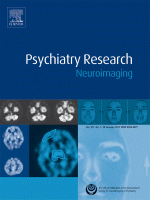
“Prevalence of psychiatric disorders continues to rise globally, yet remission rates and patient outcome remain less than ideal. As a result, novel treatment approaches for these disorders are necessary to decrease societal economic burden, as well as increase individual functioning.
The recent discovery of the endocannabinoid system has provided an outlet for further research into its role in psychiatric disorders, because efficacy of targeted treatments have been demonstrated in medical illnesses, including cancers, neuropathic pain, and multiple sclerosis.
The present review will investigate the role of the endocannabinoid system in psychiatric disorders, specifically schizophrenia, depressive, anxiety, and posttraumatic stress disorders, as well as attention-deficit hyperactivity disorder.
Controversy remains in prescribing medicinal cannabinoid treatments due to the fear of adverse effects. However, one must consider all potential limitations when determining the safety and tolerability of cannabinoid products, specifically cannabinoid content (ie, Δ-tetrahydrocannabinol vs cannabidiol) as well as study design.
The potential efficacy of cannabinoid treatments in the psychiatric population is an emerging topic of interest that provides potential value going forward in medicine.”








